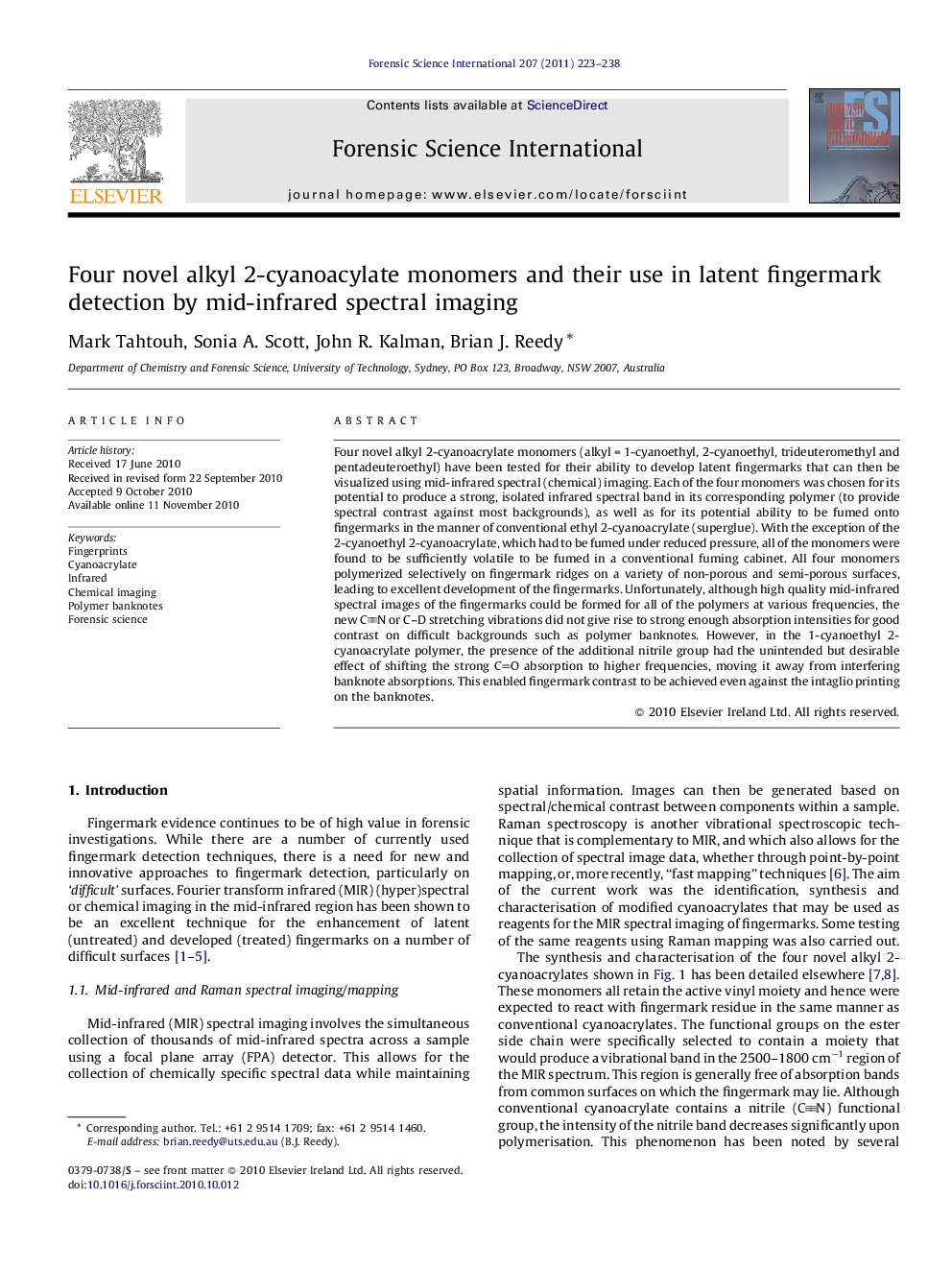| Article ID | Journal | Published Year | Pages | File Type |
|---|---|---|---|---|
| 96883 | Forensic Science International | 2011 | 16 Pages |
Four novel alkyl 2-cyanoacrylate monomers (alkyl = 1-cyanoethyl, 2-cyanoethyl, trideuteromethyl and pentadeuteroethyl) have been tested for their ability to develop latent fingermarks that can then be visualized using mid-infrared spectral (chemical) imaging. Each of the four monomers was chosen for its potential to produce a strong, isolated infrared spectral band in its corresponding polymer (to provide spectral contrast against most backgrounds), as well as for its potential ability to be fumed onto fingermarks in the manner of conventional ethyl 2-cyanoacrylate (superglue). With the exception of the 2-cyanoethyl 2-cyanoacrylate, which had to be fumed under reduced pressure, all of the monomers were found to be sufficiently volatile to be fumed in a conventional fuming cabinet. All four monomers polymerized selectively on fingermark ridges on a variety of non-porous and semi-porous surfaces, leading to excellent development of the fingermarks. Unfortunately, although high quality mid-infrared spectral images of the fingermarks could be formed for all of the polymers at various frequencies, the new CN or CD stretching vibrations did not give rise to strong enough absorption intensities for good contrast on difficult backgrounds such as polymer banknotes. However, in the 1-cyanoethyl 2-cyanoacrylate polymer, the presence of the additional nitrile group had the unintended but desirable effect of shifting the strong CO absorption to higher frequencies, moving it away from interfering banknote absorptions. This enabled fingermark contrast to be achieved even against the intaglio printing on the banknotes.
